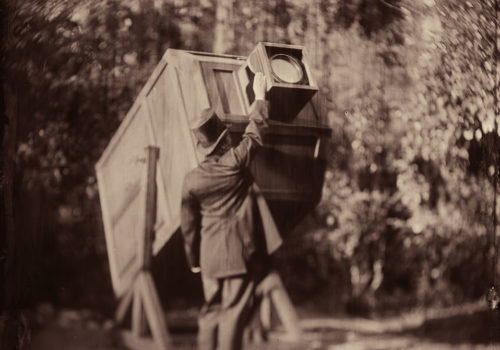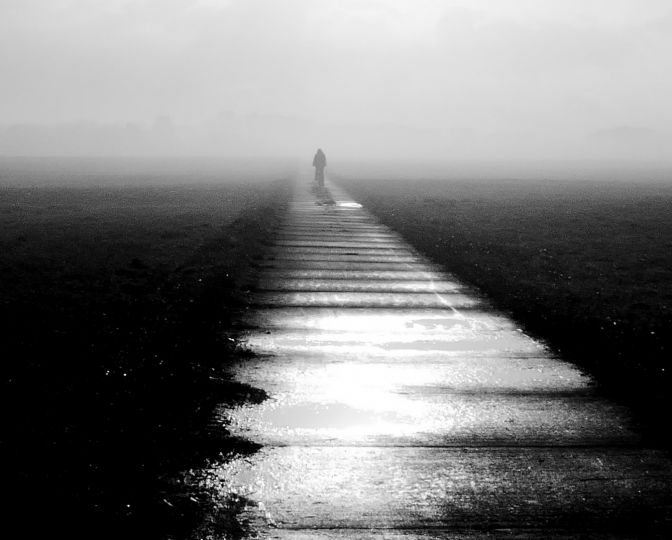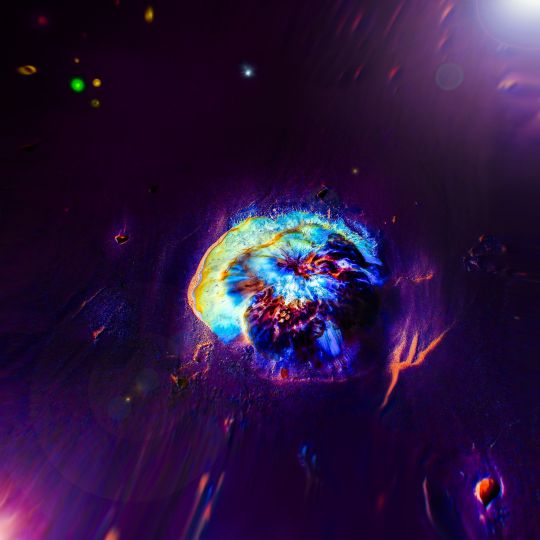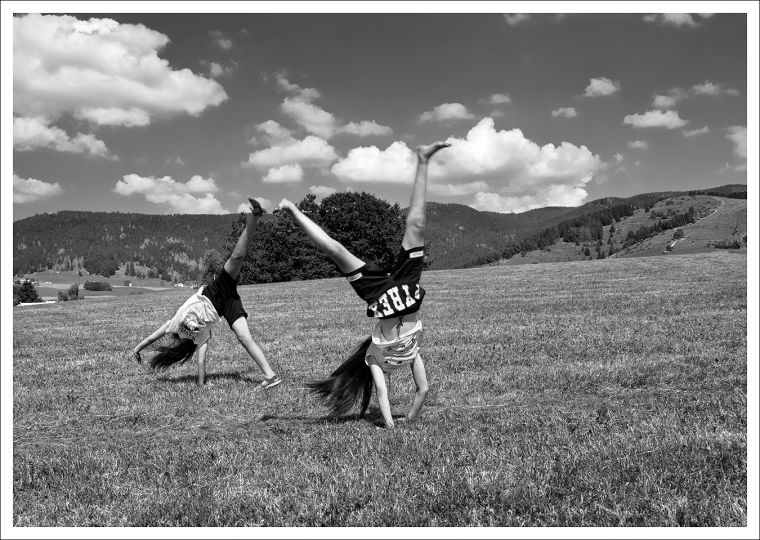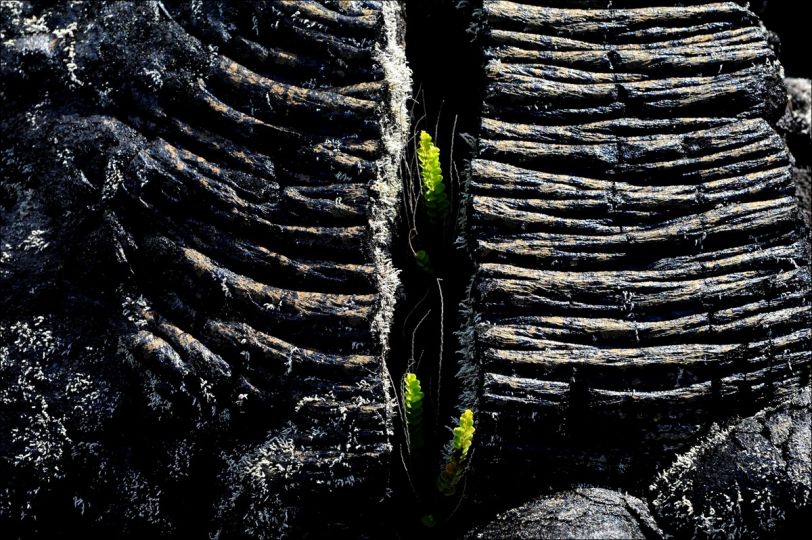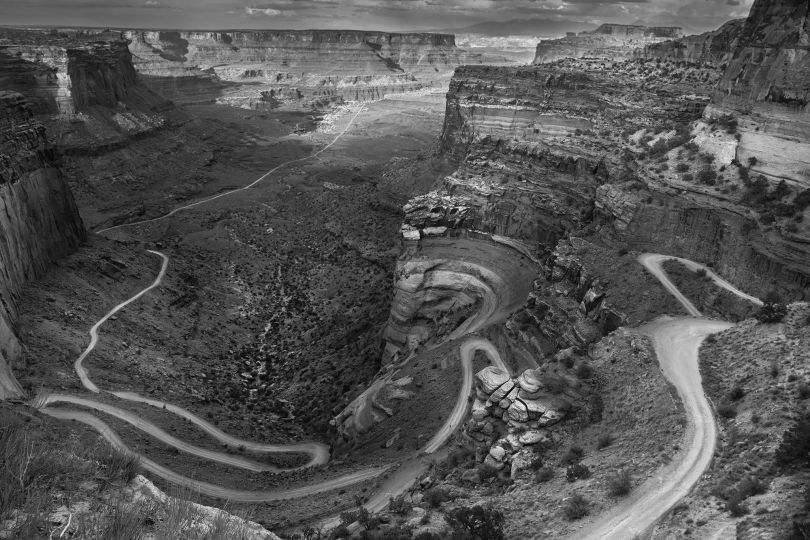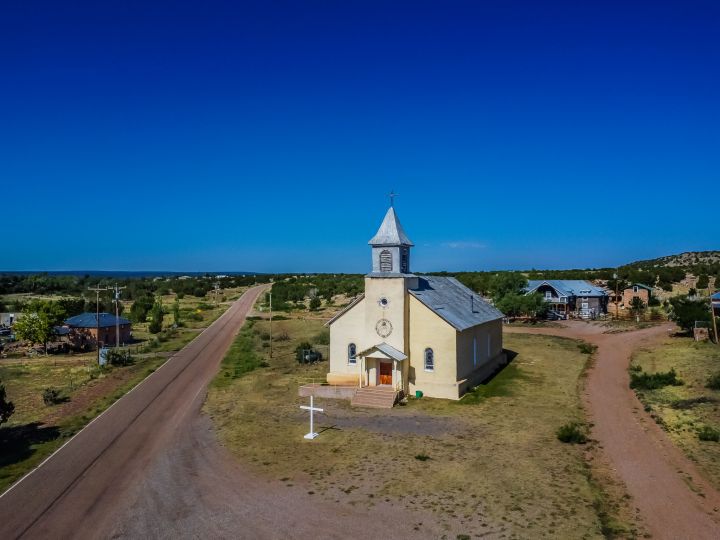It is one of the most amazing books I have seen in a long time.
Its title: Predicting the Past, Zohar Studios: The Lost Years.
Its author: Stephen Berkman. This is the extraordinary story of a Jewish photographer who opened in the 19th century a photography studio in the Jewish lower east side of New York!
This is the second portfolio that we dedicate to the book.
Zohar Studios : A Glass Requiem : Secure the Shadow ere the Substance Fade
Zohar remains like the silhouettes he made, opaque and unknowable at his core, but clearly delineated around the edges with sharp, jagged contours. I can imagine him at work with his tiny scissors, speaking little but purposefully, snipping away at anything that interfered with the precise profile of the person seated before him, a pile of black paper trimmings accumulating on the floor around him. After a flurry of activity, he would produce the silhouette, a likeness so accurate that it elicited gasps from his clients.
Shimmel Zohar had once been accused of sorcery in his native Lithuania, of stealing a sitter’s shadow to achieve an uncannily exact silhouette. There’s no question that superstition was a part of everyday life in the small shtetl of Zhidik where Shimmel was born—a town so small that it can only be described as “no bigger than a yawn.”
The impetus for his artistic career came from a most unusual event. As a child he had once seen a dybbuk staggering through the shtetl on a moonless night. Illuminated only by a bonfire burning behind him, the shadowy shape bewitched him. The following morning, he sketched the outline of the figure from memory, with its long arms dangling by its side. He filled in the contours of its dark center with ink made from ash. From that day on, he began to see people more clearly; he could see their darkness curtailed in two dimensions, as an abstract shape.
He studied drawing and painting, but making silhouettes seemed second nature to him. It was not lost on Shimmel that the art of paper silhouettes (named as a cutting insult for a frugal French finance minister, Étienne de Silhouette) was an economical form of art, and a promising source of income for an itinerant artist. At a young age Shimmel printed his first trade card and traveled to nearby towns where he offered his services:
For a short time only
Shimmel Zohar from Zhidik
Who informs the ladies and gentlemen that his exact likenesses are not only splendidly preserved but every feature is strikingly delineated.
Families waited on at any distance not exceeding two miles.
From 8 o’clock in the morning until 9 o’clock in the evening.
Requires but a few minutes sitting and rendered at a small price.
It is hoped that admirers of the art will favor Zohar’s specimens with
an inspection.
Shimmel Zohar was a walking contradiction, as even his name suggests—“Shimmel,” which implies to shimmer or shine, to radiate energy; and “Zohar,” from the ancient mystical texts of the same name, so abstrusely dense that pondering their meaning often led one into a dark cosmological maze. But like the Kabbalistic literature from which he took his name, Zohar explored concealed meanings, mysterious symbols that led to illuminating insight.
He had the good fortune to come of age at a time of miracles and wonders, before the ascendency of photography, a medium capable of conjuring a startling human likeness from a cloudy, pungent bath. Photography usurped the conjurer’s power to illuminate shadows and freeze time, and above all to open a portal into another realm.
It was inescapable that photography would be perceived as hovering in the space between science and magic. Those who pondered its mysteries included Henry Fox Talbot, one of the inventors of photography, who proclaimed:
A shadow, the proverbial emblem of all that is fleeting and momentary, may be fettered by the spells of our “natural magic,” and may be fixed forever in the position which it seemed only destined for a single instant to occupy.[1]
The first cameras were mysterious black boxes (some as small as mousetraps) that drew light in through a lens and recorded an invisible image on a plate positioned at the back of the box. The process of developing the image, removing the plate from the box and making the image visible, seemed fundamentally alchemical—as if transforming matter from one form into another. As the process became more familiar, photographers themselves seemed to delve more deeply into the dark arts. Capturing a photograph closely resembled a magician’s stage performance: the photographer pulled a dark cape over himself and the camera as he removed the lens cap for seconds, sometimes minutes, with the subject frozen in position. With the plate in hand, he withdrew silently to a dark chamber where he mixed a potion from caustic chemicals. Before long, he emerged with a startling photographic likeness of the sitter.
It was only a short time before everyone aspired to have their portraits made in front of a camera. Few but the wealthiest amateurs and scientists owned cameras, making a visit to a professional studio essential. The era of the grand studio photographer had arrived.
New York was teeming with photography studios, welcoming customers from all walks of life. Jeremiah Gurney’s studio at 707 Broadway advertised the following forms of portraiture to the public: “PHOTOGRAPHS, of all sizes, from Miniature to Life size, finished in Oil, Pastel, Water Colors, India Ink, and Crayon, by a corps of talented Artists.” Gurney, one of the founders of the photographic profession in the United States, learned to create daguerreotypes from Samuel F. B. Morse, inventor of the telegraph as well as Morse code. Morse was in Paris in 1839 when the daguerreotype was introduced by Louis Daguerre, who invited Morse to learn the process directly from him. Upon returning to New York, Morse immediately taught others to make daguerreotype images.[2] Daguerreotype photographers initiated by Morse infiltrated New York, and by 1841 there were already about a hundred studios in operation.
According to his immigration documents, Shimmel Zohar left Bremen, Germany, aboard the ship Agnes and disembarked in New York in May 1857. He arrived in America during the nascent phase of studio photography, and lived through the heyday of the illustrious photographic palaces.
Between 1855 and 1890, an influx of Yiddish-speaking Jews came through Castle Garden, New York state’s immigrant processing station prior to the establishment of the better-known Ellis Island. The word “Kesselgarden” entered the lexicon of Yiddish slang to mean any crowded, noisy, and chaotic place, including the streets of New York: the din of construction and commerce, barkers and street hustlers, clanging horse hooves and shouting carriage drivers. Among the throngs of street hucksters were barkers for studio photographers competing for business.
Zohar, an immigrant with artistic training and background, could have found employment at any number of New York photographic studios. The busiest portrait studios employed up to thirty people working variously as printers, finishing artists, hand-coloring artists, and dark-room assistants.
Among the more prominent photographers of that time was Rufus P. Anson, who opened his daguerreotype and photographic gallery in 1858 at 589 Broadway, across from the Metropolitan Hotel. A sign in his window advertised “Daguerreotypes—Large size for 50 cents.” Anson, who claimed to operate the first photographic gallery in New York, promoted his business in the city directory:
Mr. Anson has fitted up, at a great expense, the most attractive Reception Room ever offered to the Public. The walls of his palace are hung with gems of his art, among which can be seen many of our distinguished citizens… Strangers visiting the city, and wishing to obtain a first-class Photograph, Ambrotype, or Daguerreotype, are invited to examine his specimens, for which he claims a superiority and excellence second to none.[3]
Adjacent to Anson’s gallery was a photographic studio displaying a large sign arching over the doorway, “Frederick’s Photographic Temple of Art”—perhaps a clever strategy to attract pious clients who would pivot to their “temple” instead of patronizing Anson’s studio next door. Up the block, the Meade Brothers gallery at 233 Broadway offered a wide variety of daguerreotypes for sale, including portraits of prominent people and panoramas of cities around the world. In addition to photographing clients in their two portrait studios, the Meade Brothers purveyed photography equipment and supplies.
The grand illusory style of photography ushered in the era of the “studio palace.” No expense was spared in making studios into rich and ornate environments to please the discriminating client. Nineteenth-century studios were filled with lavish furniture, props, accessories, and novelties including balustrades, benches, chairs and sofas, columns, plinths and pedestals, and curtains with ornate ties and tassels.[4] Bucolic country environments were simulated with outdoor accessories, both real and imitation, including an assortment of artificial rocks, a wooden rowboat, rustic benches made of twisted willow branches, grass mats, fences, gates and trees, stumps and swings. The apparent goal was to make the sitter appear to be anywhere except inside a photography studio, prompting one critic to complain:
There is always too much of the studio in these carte de visite portraits. We do not merely refer to the extraordinary backgrounds which some of these operators employ. Why a respectable old lady is to be represented as sitting without her bonnet in a chair placed upon a Brussels carpet in the middle of a terraced garden, is always very perplexing; and it is equally difficult to understand what the foundation can be for the theory, which seems to have possessed the minds of several of the photographers, that the middle-aged men of England generally spend their lives leaning against a Corinthian pillar, with a heavy curtain flapping about their legs, turning their backs to a magnificent view, and obviously standing in a frightful thorough draught.[5]
Broadway photographers competed for the celebrity trade by offering glamorous studio environments, costumes, and set pieces. Conversely, photographers on the Lower East Side welcomed a more varied clientele, including immigrants from around the world fleeing political upheaval and poverty. “Three Branches,” as it was known then, was a district on the Lower East Side where three thoroughfares converged in a vibrant nexus, a conflation of classes, ethnicities, and characters. Even the poorest of immigrants in this neighborhood wished to be photographed in opulent environments, dressed in their finest clothing. In some cases, these photographs were sent home to families who remained in the old country, as evidence that the newcomers had found prosperity and “made it” in America. The photographers themselves were often recent immigrants, eager to indulge the tastes of their clients and to exploit the riches of a thriving city.
The art of photography was learned through apprenticeship, and any aspiring artist could seek out an established studio to learn the craft. Two years or even less could be enough to absorb important lessons from a master of the trade. One can surmise that Zohar, with his artistic background, would have been a quick study, mastering the pertinent visual languages and traditions, learning to control all variations of lighting—diffuse sunlight, northern light, deep shadow, the gradual modulation of shade to create modeling, and the dispersion of light sources. These lessons would have been indispensable when he eventually opened his own studio. In his later work he apparently became adept at using fabric, screens, and baffles to give his shadows softness and to staunch harsh glare, lending nuance to his subjects.
With competition fierce among portrait artists, each studio had to establish a unique specialty and identity. Compared to pompous photographic palaces, Zohar’s studio was less ostentatious, eschewing decorative drapery and opulent carpets and tapestries. His skylight studio at 432 Pearl Street was instead a palace of extraordinary light.
At Zohar Studios, stepping into the foyer was like accepting an invitation to enter a miraculous, mystifying realm. The studio was a repository of paraphernalia encapsulating the history of photography to date. Anything that caught Zohar’s eye or might inspire an artistic variation of an extant photograph was stored and cataloged for future use. Thoroughly equipped in photographic materials, the studio was also Zohar’s personal residence. He rarely discarded anything, instead accumulating flotsam and jetsam left over from photographs and his own life until the two worlds overlapped. Fragments of his distant past came to the surface from time to time, interspersed with props and remnants of photographs long ago completed.
A nineteenth-century photographer was required not only to master basic professional training but also to maintain the highest standards of decorum and hygiene. A stern warning to “bad operators” was published in the British Journal of Photography, aimed at American photographers of ill repute:
Photographers who chew or smoke tobacco in the presence of their customers, or allow anyone else to smoke in their rooms or spit on their floors and carpets; or an operator who has the odor of beer or whiskey about his person; his clothing and linen dirty; his language and manners not polite and respectful to all and every one of his patrons; his gallery, stairways, chairs, and showcases dirty, dusty, and everything out of order; the specimens on the wall old and out of date; the frames dusty and ornamental with spider webs—must not be surprised that he has nothing to do. Such a photographer is distasteful to either ladies or gentlemen, and the sooner he gets “burned out” the better it will be for himself and his patrons.[6]
Most photographers purchased backdrops and papier-mâché props from L. W. Seavey, New York’s leading supplier of such materials.[7] A former theater-set artist, Seavey got his start in business by painting backdrops derived from scenes in Broadway plays. According to his notes, Zohar preferred to design less conventional scenes on his own. They were painted for him by an elderly scenic artist from the Russian ballet who had escaped the Crimean War and emigrated to America.
Zohar’s studio at 432 Pearl Street was situated on two floors, with spacious open rooms, each large enough to accommodate an assortment of props, furniture, costumes, and sundry goods. The studio space was surprisingly malleable, constantly shifting to suit the client. An important part of the studio, one visitors never encountered, was Zohar’s personal office, a garret on the third floor of the building that he discovered by accident, according to his diary. He described the door as less than four feet tall, and the ceiling was so low that one had to stoop in places. He preferred the attic to the larger spaces in the building, returning to his office every night to record copious notes and to write correspondence. The cramped room overflowing with papers, archives, books, and letters reminded him of his childhood home in Zhidik. He retained the steamer trunk that held his belongings when he arrived in America—a reminder that he began his new life with next to nothing. (Zohar made the journey back to Zhidik on several auspicious occasions. On one trip he encountered a ventriloquist and his dummy, which he remembered from his youth.)
Most photographic studios contained regions that were off limits to patrons, including a critical part of the photographic process that was often strategically located adjacent to the shooting area. A “Do Not Enter” sign was usually posted over its door, lest a client accidently wander in. But the warning was hardly necessary; very few would have been tempted to enter this cavernous space, reeking of chemical fumes and poisoned air. The darkroom, in all respects the opposite of the brilliantly lit atmosphere of the skylight studio, is photography’s twin—you need light to make a photograph but you also need darkness. Early photography was referred to as “the dark art,” and the appellation worked on many levels. Practitioners found it hard to forget photography’s alchemical origins; the sulfuric odor and acrid chemistry inside a darkroom was a constant reminder that photography was in essence the art of conjuring an image from the ether.
Making paper prints was an extension of the darkroom process. The earliest of these were made in sunlight, as contact prints that required long exposures. Early paper prints and paper negatives such as the calotype were also reproducible only at their original size. The introduction of the solar enlarger, first patented by Henry Fox Talbot in 1843, made enlarged prints possible for the first time. By the mid 1850s Gustave Le Gray employed the solar enlarging camera to produce his massive collodion views (30 by 40 cm and 40 by 50 cm) of seascapes and of downtown Paris from much smaller plates. By the 1860s solar enlargers were readily available for purchase through a catalog from E. & H. T. Anthony & Company, photographic suppliers.
Rooftops were ideal locations for solar enlargers; they could remain undisturbed for long periods of time. Exposure times could be hours or even days, depending on the weather. Often an apprentice ensured that the camera was pointed toward the sun, following its path across the sky. A peephole in the enlarger allowed one to view the progress of the image. First, the paper was sensitized and allowed to dry flat; albumenized paper required longer exposures, so the salted paper process was preferred. Talbot’s calotype process took advantage of the solar enlarger. He used gallic acid as a sensitizing agent to reduce exposure times in sunlight—between ten and thirty minutes, depending on the quality of light and density of the negative. Later, the advent of more sensitive bromide paper in the 1880s opened new possibilities for photographers.
Innovations in photographic technology toward the end of the nineteenth century brought faster chemistry, shorter exposures, and cheaper cameras. But hidden within these advancements was the eventual demise of the grand photographic studio. The arrival of the box camera—affordable and portable—was the harbinger of a sea change. The ubiquity of box cameras and availability of dry film plates or roll film ushered in the era of amateur photographers. No longer satisfied by standard painted backdrops, amateurs preferred to travel to scenic locations with their own cameras. With customers departing for far-flung locations, many elaborate portrait studios struggled to keep their doors open. It’s likely that Zohar’s relatively modest studio in a low-rent neighborhood managed to stay in business while extravagant palaces folded around him, but eventually even he decided to set out on a new adventure.
A newspaper notice of an auction is perhaps the only accurate inventory of the contents of Zohar’s studio,[8] though it was apparently canceled for reasons that remain unclear. Perhaps Zohar couldn’t part with his belongings, or had a change of heart and hoped to return to his studio after his travels. Perhaps in a declining market, he decided it was time to close up shop. Leaving his studio under lock and key and the watchful eye of Mr. Johnson, who owned the music store downstairs, he departed on an extended cross-country excursion through America, taking with him only what his studio on wheels could carry. In the vein of early photographic wagons, like those used by Timothy O’Sullivan or Mathew Brady during the Civil War, Zohar designed one for himself. Similar to the van that Roger Fenton employed while photographing the Crimean War, Zohar’s wagon had impermeable canvas walls to shelter his equipment from rain.
The trip may have been inspired by his desire to make his living as an itinerant photographer—albeit one who preferred to remain in one place. In a letter written to his paramour, a former showgirl named Flora, he described the wonders of the road—his desire to work in natural light and in an ever-changing landscape.
Zohar may have planned to return to New York, but he vanished, never to be heard from again. Eventually the contents of the studio were scattered, a fate shared with most nineteenth-century collections. What remains is incomplete and fragmentary at best. The trunk that I acquired from Elli Buk’s repository of antiques on Spring Street contained a trove of paper ephemera concealed inside it—my only possible point of departure. Among the salvageable pieces was a silhouette trade card from Zhidik, Lithuania, a portrait of an erstwhile showgirl named Flora, and a journal written entirely in Yiddish.
Piecing together the story proved to be a circuitous journey. Attempting to unravel such a conundrum was risky, but leaving the pages of this relic unturned would have risked far more, even when fact could no longer be distinguished from fiction.
[1] Talbot’s presentation, “On the Art of Fixing a Shadow.”
[2] Among his famous pupils was Mathew Brady, who documented the Civil War in photographs.
[3] Carroll’s New York City Directory (New York, 1859).
[4] Ayres’ Chart of Photographic Drapery appeared in many studios, illustrating forty-two pieces of cloth of all colors and shades, handsomely
mounted on a card. It was intended to be displayed in every reception room to show customers which which color clothing to wear, and to
recommend appropriate backgrounds and accessories.
[5] Published in The Photographic Journal, Being the Journal of the Photographic Society, no. 128, December 15, 1862.
[6] Printed in the British Journal of Photography, July 26, 1872.
[7] Christian A. Peterson, Chaining the Sun: Portraits by Jeremiah Gurney (Minneapolis, 2000).
[8] See partial inventory in newspaper notice of auction.
Stephen Berkman : Predicting the Past, Zohar Studios : The Lost Years
https://hatandbeard.com/products/predicting-the-past-zohar-studios-the-lost-years
Stephen Berkman

